Hoya Chelsea Profile
Written by Iris
Nov 10 2021
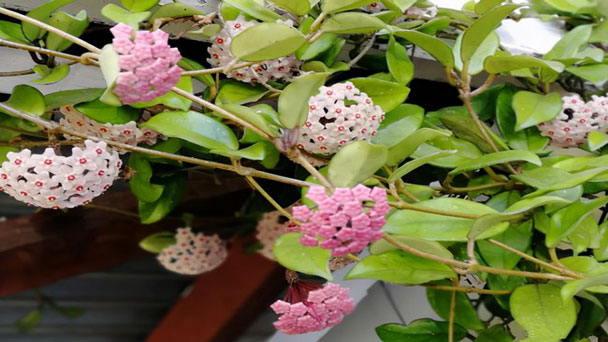
Hoya Chelsea is a trailing wax plant with attractive cascading green leaves. Hoya Chelsea leaves are beautifully shaded green, thick, wrinkled and heart-shaped. Hoya Chelsea is perfect for hanging in a basket or sitting on a shelf. Hoya Chelsea should be at the top of any Hoya collector's wish list.
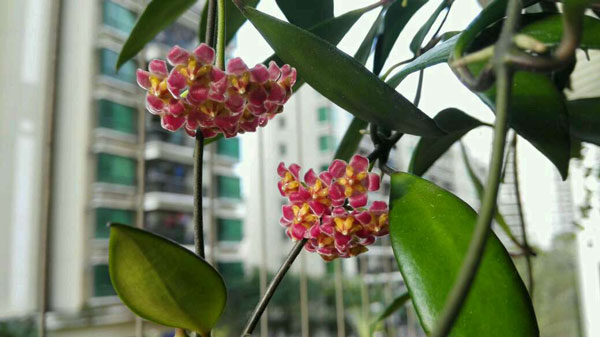
Hoya Chelsea plants can grow quite long—up to 12 feet, in fact. Though you likely won’t achieve that as a potted plant indoors. They can grow long and trailing from a hanging basket, or you can train them to vine up a trellis. I have mine in a hanging basket, and it’s lovely.
The leaves on the hoya carnosa chelsea do not unfurl at full size, either. So don’t panic if the new growth is very small. Leaves sprout from the stems and remain small and lighter in color for a while, eventually growing to their full size and color.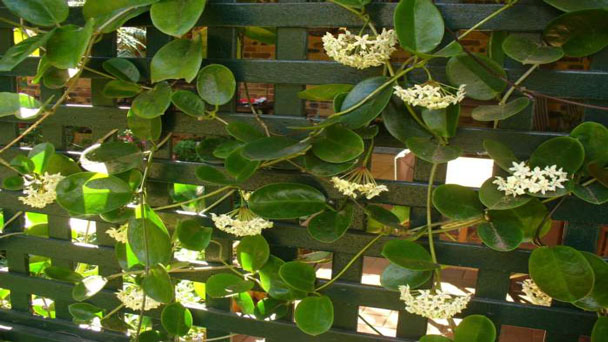
The easiest way to breed hoya chelsea is through stem cuttings. The best time to do this is in spring or early summer at the latest. Because Hoya Chelsea is growing at this point, it takes root faster and will start growing faster.
Here's how to breed the Hoya Chelsea from stem cuttings.
Take a 4 - to 6-inch stem. Ideally, you want to choose a healthy-looking stem with at least two or three leaves.
Using a sterile cutting tool, cut the stem just below the leaf nodes.
Remove the lower leaves as they will be submerged in water or planted under the soil.
You can also dip the cutting end in rooting hormones to help speed up the process.
Cut the stems into a small container of fresh potting mixture.
Water the soil and keep it moist.
Place the new Hoya Chelsea somewhere warm, in bright indirect sunlight.
You can cover the plants with plastic bags to increase the humidity. This will help the new Hoya Chelsea take root and grow faster in the initial phase.
In about 3 to 4 weeks, the plant will take root, although you can only test it by gently pulling on your Hoya Chelsea. Resistance is a sign that roots are taking root.
Another option is to breed in water. This will allow you to observe the root growth as you will see them through the jar.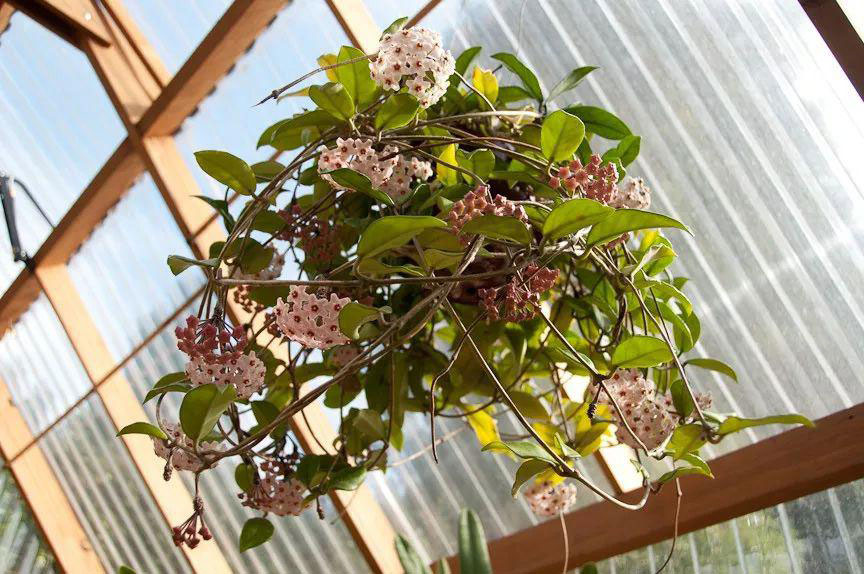
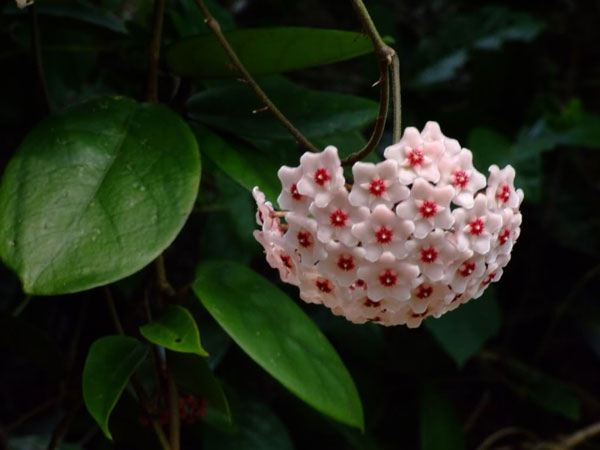
Hoya Compacta 'Indian Rope': Pale pink flowers and curly leaves; pretty even when the plant isn’t blooming
Hoya Cumingiata: Yellow flowers with red corona; fragrant
Hoya Kerrii Variegata 'Sweetheart Plant': Heart-shaped foliage with white margins; yellow and orange flowers
Hoya Onychoides: Purple flowers with an exaggerated star shape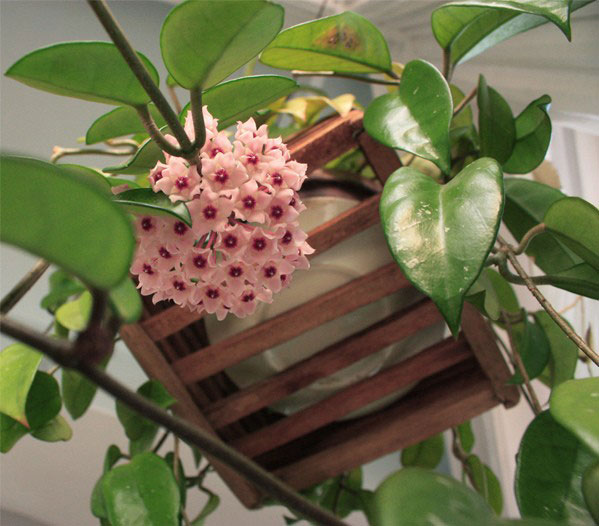
Read Next:
20 Popular Vine Plants Indoor To Grow
Hoya Carnosa (Wax Plant) Care Tips & Growing Guide
Hoya Australis Care & Propagation Guide
Heart Hoya Plant Care & Propagation Guide
Hoya Linearis Care & Propagation Guide
Hoya Polyneura Care & Propagation Guide
Hoya Chelsea Care & Propagation Guide
Hoya Chelsea PictureHoya Chelsea InfoHoya Chelsea Native HabitsHoya Chelsea DistributionHow to Grow & Care for Hoya ChelseaHow to Grow Hoya ChelseaHow to Care for Hoya ChelseaHoya Chelsea UsesHoya Chelsea VarietiesHoya Chelsea Common Pests/DiseasesPotting and Repotting Hoya Chelsea
Hoya Chelsea Picture

Hoya Chelsea Info
| Scientific Name | Hoya carnosa |
| Common Name | Hoya Chelsea |
| Category: | Flowering Houseplant |
| Available Colors: | Shades of pink, white, red, and bicolor |
| Bloom Time: | All year |
| Height Range: | 6-15" (15-38cm) |
| Space Range: | 12-15" (30-38cm) |
| Lowest Temperature: | 60° to 80°F (16° to 27°C) |
Hoya Chelsea Native Habits
Hoya Chelsea is distinguished by its waxy, puckered, glossy leaves and sweet scent. The plant so similarly resembles wax that it is often mistaken as fake. This is encouraged by the plant’s distinctive, flesh-colored flowers that also have a waxy appearance.Hoya Chelsea plants can grow quite long—up to 12 feet, in fact. Though you likely won’t achieve that as a potted plant indoors. They can grow long and trailing from a hanging basket, or you can train them to vine up a trellis. I have mine in a hanging basket, and it’s lovely.
The leaves on the hoya carnosa chelsea do not unfurl at full size, either. So don’t panic if the new growth is very small. Leaves sprout from the stems and remain small and lighter in color for a while, eventually growing to their full size and color.
Hoya Chelsea Distribution
The Hoya family has been cultivated for over 200 years, which has prompted the creation of many different variants. The Hoya Carnosa Chelsea, much like many species in its family, originate from Eastern Asia and Australia. As Hoyas have become popular among plant lovers, it has made its way across the world. The Hoya Chelsea is now found naturally growing in the wilds of Queensland, China, East India, Taiwan, Myanmar, Malaysia, Vietnam, the Fiji Islands, and the Japanese islands of Ryukyu and Kyushu.
How to Grow & Care for Hoya Chelsea
How to Grow Hoya Chelsea
Hoya Chelsea Propagation with Stem CuttingsThe easiest way to breed hoya chelsea is through stem cuttings. The best time to do this is in spring or early summer at the latest. Because Hoya Chelsea is growing at this point, it takes root faster and will start growing faster.
Here's how to breed the Hoya Chelsea from stem cuttings.
Take a 4 - to 6-inch stem. Ideally, you want to choose a healthy-looking stem with at least two or three leaves.
Using a sterile cutting tool, cut the stem just below the leaf nodes.
Remove the lower leaves as they will be submerged in water or planted under the soil.
You can also dip the cutting end in rooting hormones to help speed up the process.
Cut the stems into a small container of fresh potting mixture.
Water the soil and keep it moist.
Place the new Hoya Chelsea somewhere warm, in bright indirect sunlight.
You can cover the plants with plastic bags to increase the humidity. This will help the new Hoya Chelsea take root and grow faster in the initial phase.
In about 3 to 4 weeks, the plant will take root, although you can only test it by gently pulling on your Hoya Chelsea. Resistance is a sign that roots are taking root.
Another option is to breed in water. This will allow you to observe the root growth as you will see them through the jar.

How to Care for Hoya Chelsea
- Light Care
- Soil Care
- Water Care
- Temperature and Humidity Care
- Fertilizer Care
- Pruning Care

Hoya Chelsea Uses
Looks great grown in containers and hanging baskets. Ideal for growing in a container and training to a small trellis.Hoya Chelsea Varieties
Hoya Archboldiana: Cup-shaped creamy flowers with a maroon coronaHoya Compacta 'Indian Rope': Pale pink flowers and curly leaves; pretty even when the plant isn’t blooming
Hoya Cumingiata: Yellow flowers with red corona; fragrant
Hoya Kerrii Variegata 'Sweetheart Plant': Heart-shaped foliage with white margins; yellow and orange flowers
Hoya Onychoides: Purple flowers with an exaggerated star shape
Hoya Chelsea Common Pests/Diseases
Hoya Chelsea doesn't have a lot of pest and disease problems. However, because of its idiosyncrasies and preferences, the Hoya Chelsea may be susceptible to them. When the Hoya Chelsea blooms, it emits a sweet smell that pets and bugs seem to love. Also, the Hoya Chelsea is prone to overwatering and overfeeding. Both conditions make it more susceptible to pests and diseases. In addition, the preference for high humidity makes moisture a constant threat. Therefore, proper care and regular check-ups are very important. This will prevent these headaches from happening. You can catch them early to prevent them from developing into pests, which are not only harder to treat, but also more dangerous to plants.
Potting and Repotting Hoya Chelsea
Hoyas like the security of a snug pot and plants that are a bit root-bound will flower more prolifically than those that are swimming around in a giant pot. Hoyas don't like wet feet or heavy soil, and as many grow as epiphytes in nature (similar to bromeliads and orchids). Mixing your regular potting soil with orchid potting mix in a 1-1 ratio will provide an ideal growing medium for your hoya plant. Also, when repotting, use pasteurized soil or growing medium in either new pots or those that have been washed in a solution of chlorine bleach and water.Read Next:
20 Popular Vine Plants Indoor To Grow
Hoya Carnosa (Wax Plant) Care Tips & Growing Guide
Hoya Australis Care & Propagation Guide
Heart Hoya Plant Care & Propagation Guide
Hoya Linearis Care & Propagation Guide
Hoya Polyneura Care & Propagation Guide
Hoya Chelsea Care & Propagation Guide
Latest Updated
- Benefits of Bugleweed - 7 Science-backed Health Benefits
- Bugleweed Dangers & Side Effects - Is It Poisonous?
- How to Plant Evergreen Trees - What You Should Know
- When to Plant Evergreens - Grow Guide for Evergreen Trees
- 12 Wonderful Evergreen Shrubs for Your Garden
- 12 Popular Evergreen Plants with Pictures for Beginners
- When And How To Prune A Lilac Bush Like a Pro
- How to Grow & Care for Lilac Vine (Hardenbergia Violacea)
- Japanese Lilac Tree (Syringa Reticulata) Care & Propagation Guide
- Shumard Oak Pros and Cons - What to Know
Popular Articles
- Winter maintenance of Antirrhinum Majus
- How to Grow Terminalia Mantaly Tree
- How to Grow and Care for Crossostephium Chinense
- How to grow Antirrhinum Majus in spring
- Peristeria Elata (Dove Orchid) Profile: Info & Care Guide
- Underwatered Snake Plant (Sansevieria Trifasciata) - Signs And How To Fix
- How to Care for Brazilian Jasmine Plant (Mandevilla Sanderi)
- How to Grow & Care for Graptopetalum Purple Delight in Summer
- Rosa Chinensis (China Rose): Plant Growing & Care Tips
- How to Care for Baby Sun Rose (Aptenia Cordifolia)